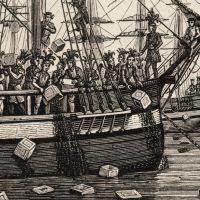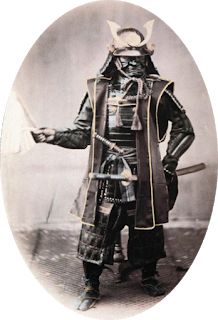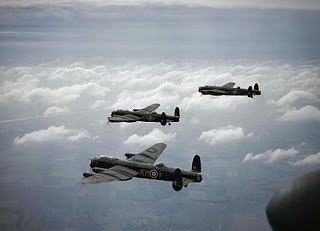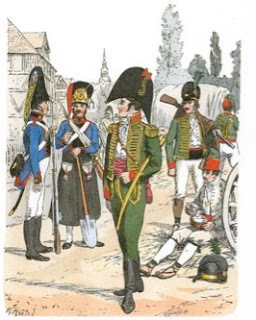Rupert Matthews's Blog, page 14
January 6, 2020
The Duties of a Roman Governor
 Much of the administration and government of a province was in the hands of local government, not of the governor. The main job of the governor was to ensure that the province provided to Rome what it was supposed to do.
Much of the administration and government of a province was in the hands of local government, not of the governor. The main job of the governor was to ensure that the province provided to Rome what it was supposed to do. The most important task of a governor was to raise the taxes due to the Roman empire and make sure that they reached Rome safely. The governor might also have to raise auxiliary troops and send them on campaign.
Taxes were usually collected by private men. These men agreed an annual contract with the governor. They might be paid a percentage of the taxes collected, or be allowed to keep anything over a set amount that was paid to the governor.

Published on January 06, 2020 06:22
Iron in Greece
Iron was introduced to Greece during the Dark Age. At first the metal was very expensive, so it was used only by kings and nobles.


Published on January 06, 2020 06:20
The Boston Tea Party

The British colonies in North America had grown up around commercial and religious colonies and had become accustomed to running their own affairs. When the British government attempted to impose stricter control from home it lead to trouble.
Over the years since they were founded, the British colonies of North America prospered and grew out of all expectation. Rivalry with France had been ended in 1756 when General Wolfe captured Quebec and conquered the French colonies. However, the increasingly large and prosperous colonies were proving expensive to protect and police.
In order to recoup the costs of running these territories, the British government imposed a number of taxes on the American colonies. Because most of these were imposed on trade, they directly affected the wealth of the residents and were deeply resented. After a number of protests and a few outbreaks of violence, the British lifted the new taxes.
However, one much hated measure remained. The East India Company was given a monopoly over trade in tea and the government took a cut of three pennies a pound. The American colonists were angry that they could not buy tea from whom they wished, and doubly annoyed that this was to enforce a tax paid to London. Newspapers and politicians called for a boycott of tea which, although not terribly effective, did raise the issue.
On 16th December 1773 a group of young colonists in Boston dressed themselves as Mohawk Indians and stormed aboard the ships of the East India Company that were in harbour. The ‘Sons of Liberty’ as they called themselves, pushed aside the protesting sailors, smashed open 342 chests of tea and dumped the contents in the harbour.
When news of the raid reached London, the Prime Minister, Lord North, ordered that the entire port of Boston be closed to all ships. He then went on to revoke the power of Massachusetts to rule itself and imposed a governor from London. Not content with that, the British government also required government officials accused of serious crimes to be sent to London for trial, instead of trusting them to local juries, and gave the new governor the right to station his troops wherever he liked, even in people’s houses. The colonists dubbed these Acts of Parliament the ‘Intolerable Acts’ and were determined to overthrow them.

Published on January 06, 2020 06:18
Is Whitehall full of civil servants?

To the British ‘Whitehall’ is not just an area of London, it is also synonymous with the bureaucracy of Government. Whether one wishes to describe the efficiency and unbiased nature of the government machine or its inefficiency and bias, one refers to ‘Whitehall’.
The reason why Whitehall has become so identified with civil servants and bureaucracy dates back to the reign of King Henry VIII in the 16th century. King Henry had tired of living in Westminster Palace as that building was increasingly being taken over for offices relating to Parliament and the Exchequer. He therefore acquired land on the banks of the river to the north of Westminster and from 1512 carried out extensive building works. Named Whitehall Palace because it was built of a stone lighter in colour than Westminster, the new edifice was designed for pleasure. In addition to comfortable living rooms and grand state rooms, the Whitehall Palace included gardens, orchards and a cockpit as well as a tiltyard.
The Whitehall Palace remained the principal residence of the Royal Family in London until 1688 when William III and Mary II came to the throne. William found the damp river air bad for his breathing so the Court moved to Kensington Palace. Ten years later a blundering Dutch washerwoman knocked over a lantern and set fire to Whitehall Palace. With all the men and equipment of the Court removed to Kensington, the fire raged unchecked through the 2,000 rooms of Whitehall and in a few hours the palace was a heap of smouldering ruins. Only the grand Banqueting House remained.
The destruction wrougt by the fire meant that there was suddenly a large amount of open ground belonging to the Crown available for redevelopment. At first a series of residential houses were erected and rented out, but before long the growing need for government offices near Westminster Palace began to be felt. Among those Whitehall houses was Wallingford House, owned by the Duke of Buckingham. This had been taken over by the navy as premises for central planning, the commissioning of ships and other necessary adminsitrative work. It was replaced in 1722 by the present Admiralty building, though there have been several alterations carried out since.
The next oldest of the government office buildings in Whitehall is the Paymaster General’s Office, built as a private house by John Lane in 1732, but much altered to accommodate offices. Dover House was built in 1754 and much altered in 1792. It was a private house until 1885 when the Government took it over and it is now the home of the Scottish Office. Built rather later, but entering government service earlier, was Gwydyr House which was erected in 1772. It was taken over by the government in 1842 and now houses the Welsh Office.
The first of the truly great purpose-built government offices in Whitehall is the Foreign Office, erected in 1868. Erected in grand Italian Renaissance style by the architect Sir George Gilbert Scott, the Foreign Office is generally held to have one of the most imposing entrance halls and staircases in all London. It was not meant to be that way. Scott wanted to build a Gothic masterpiece to rival the new Palace of Westminster then being completed in that style, but parliament refused after an extremely acrimonious series of debates dubbed by the Press ‘The Battle of the Styles’. Scott’s second suggestion of a Byzantine edifice was also rejected and in the end he had to accept the views of Prime Minister Palmerston who wanted an Italian style.
Next to be erected was the Ministry of Housing which was erected in 1898 in conscious imitation of Scott’s edifice. This was followed in 1957 by the Ministry of Defence, a massive complex which has the unusual distinction among government offices of having a pair of gigantic nude statues flanking its official entrance. Finally, in the later 20th century the pseudo-Tudor building for the Department of the Environment was added beside the Ministry of Defence. Among the other government offices along Whitehall are the old War Office, Horse Guards, Admiralty House and Arch and other, smaller buildings.
Exactly how many civil servants work in these various buildings along Whitehall is shrouded in secrecy. However, the size of the buildings would indicate they have a capacity for something over 50,000 office staff.

Published on January 06, 2020 06:16
The earliest cats had elongated bodies

The earliest cats had elongated bodies
The earliest known cat was Dinictis (dye-nik-tiss) which lived in North America about 30 million years ago. It had a long, muscular body with powerful legs. Dinictis would have hunted by creeping up close to prey, then leaping at them.

Published on January 06, 2020 06:14
Murmillos and Retiarius - A Gladiator Game to play at home

Murmillos and Retiarius
A game for two players.
You will need:
A chess board
A set of chess pieces
1) Use only the pawns, each of which represents a murmillo gladiator, and one knight which represents a retiarius gladiator. Each player places his murmillos on the row of squares closest to him. The retiarius can be placed anywhere on the second row of squares.
2) Each murmillo can move two spaces forward, backward or sideways, but not diagonally. Each retiarius can move up to four spaces forward, backward or sideways, but not diagonally. No gladiator can jump over another.
3) Players take it in turns to move one gladiator each. If a gladiator lands on a space occupied by an opponent, the opponent’s gladiator is defeated and removed from the board.
4) The winner is the player who manages to defeat all the opposing gladiators.
5) If the players are left with one murmillo or one retiarius each, the game is a draw.

Published on January 06, 2020 06:13
Samurai wore elaborate armour

Samurai wore elaborate armour. For many years the islands of Japan were ruled by a class of noble warriors known as the samurai. As a mark of their status, samurai wore suits of armour made from hundreds of small plates of metal laced together with brightly coloured silk. Each group of samurai had a badge, or sashimono, often a picture of a plant or animal.

Published on January 06, 2020 06:10
No. 50 Squadron of the RAF over Cologne

A week later on 28 June the squadron went to Cologne as part of a force of 608 bombers that had railways works as the main target. Over the city one of the Lancasters had a flak shell burst immediately under its nose. The perspex cupola through which the bombaimer worked and the navigator peered was ripped off and the resulting rush of air into the nose of the bomber blew all but one of the navigation charts out. Navigator Sergeant John Heath was, moreover, hit in the shoulder by shrapnel. This was, however, Heath’s 23rd mission and he was unfazed by his sudden problems. Propping himself against the side of the damaged bomber he managed to navigate the bomber back over Germany, Holland and the North Sea to return to Lincolnshire. It was only after the bomber had landed that he informed the pilot that he had been wounded and would rather appreciate an ambulance.
Another Lancaster of the squadron had an equally adventurous time over Cologne that night. Flight Sergeant Morral Cole had just piloted his bomber over the aiming flares when the Lancaster gave a sudden lurch. Cole struggled to get control of his bomber, fearing it had been hit by flak. Calling up his crew over the intercom for reports, Cole learned from his tail gunner, Sergeant Frank Pointon, that the bomber had been hit by incendiary bombs dropped by another Lancaster higher up. Pointon reported that none of the incendiaries had ignited, and all had fallen off the bomber. However, said Pointon, his own turret was now non operational. Cole piloted the bomber away from Cologne, north to the North Sea and then headed for base. It was only once they were out over the sea that Pointon informed Cole that he had been wounded and was now feeling woozy, probably from loss of blood. The mid upper gunner was despatched to give first aid, and was astonished to find that Pointon had had the index finger sliced clean off his left hand.

Published on January 06, 2020 06:08
The Advantages of the Spanish Army in the Peninsular War
 Spanish soldiers from 1810. On the left are a grenadier and pioneer from a line infantry regiment. In the centre is a light cavalry officer while to the right are his men in campaign and stable uniforms. Despite the various handicaps of the Spanish army, it did have some great strengths. The first of these was numbers. When the French invaded, the Spanish army numbered over 100,000 regulars - a substantial force by anyone's measure. Throughout the war, recruitment into the army never lacked men so despite repeated defeats and losses the Spanish army ended the war almost as large as it began it. Aiding this trend was the fact that Spanish soldiers had the habit of walking off home after a defeat to hide their weapons and uniforms from prying French eyes. When a new army was being raised, the former soldiers would put back on their uniforms, grab their weapons and go back to the army. The French found it bewildering how an area could be devoid of Spanish troops one day, but swarming with them the next. Once they realised what was happening, of course, it made them suspicious of Spanish civilians and prone to take reprisals. The other advantage the Spanish army had was a great willingness among the men to fight the French. The behaviour of the French armies played a large part in this. At its best, the French army stole food wherever it went, more usually the men looted anything of value and in several notorious cases indulged in murder and rape on a large scale. When the French captured Oporto in March 1809 about 5,000 civilians died, much of the city went up in flames and few women escaped rape. Spanish resentment against the French quickly turned to a hatred that explains why Spanish armies were usually so keen to attack the French, and so reluctant to take prisoners.
Spanish soldiers from 1810. On the left are a grenadier and pioneer from a line infantry regiment. In the centre is a light cavalry officer while to the right are his men in campaign and stable uniforms. Despite the various handicaps of the Spanish army, it did have some great strengths. The first of these was numbers. When the French invaded, the Spanish army numbered over 100,000 regulars - a substantial force by anyone's measure. Throughout the war, recruitment into the army never lacked men so despite repeated defeats and losses the Spanish army ended the war almost as large as it began it. Aiding this trend was the fact that Spanish soldiers had the habit of walking off home after a defeat to hide their weapons and uniforms from prying French eyes. When a new army was being raised, the former soldiers would put back on their uniforms, grab their weapons and go back to the army. The French found it bewildering how an area could be devoid of Spanish troops one day, but swarming with them the next. Once they realised what was happening, of course, it made them suspicious of Spanish civilians and prone to take reprisals. The other advantage the Spanish army had was a great willingness among the men to fight the French. The behaviour of the French armies played a large part in this. At its best, the French army stole food wherever it went, more usually the men looted anything of value and in several notorious cases indulged in murder and rape on a large scale. When the French captured Oporto in March 1809 about 5,000 civilians died, much of the city went up in flames and few women escaped rape. Spanish resentment against the French quickly turned to a hatred that explains why Spanish armies were usually so keen to attack the French, and so reluctant to take prisoners. 
Published on January 06, 2020 06:04
August 31, 2019
Sir John Strangways declares for the King, 1642

When the English Civil War broke out in 1642 the county of Dorset was one of the most divided in the kingdom. Most of the towns, except Dorchester, declared for Parliament while most of the countryside was for the King. The owner of Abbotsbury at the time was Sir John Strangways, one of the most prominent Royalists in the county
Strangways had been born in 1585 and was elected to Parliament several times between 1614 and 1629 as well as serving as Sheriff of Dorset. He held a number of other local government positions and visited Court many times. When Charles summoned Parliament in 1640 for the first time in 11 years, Strangways was elected MP for Weymouth, despite his known support for King Charles and Weymouth's Parliamentarian sympathies.
In Parliament, Strangways argued long and hard in favour of the King's case, proving to be one of Charles's more able supporters in Parliament. When the war broke out, Strangways slipped away from London to return to Dorset. In September 1642 Parliament voted to expel all those MPs who had sided with the king, so Strangways lost his seat. This does not seem to have bothered him much for he was busy organising the Royalist cause in Dorset.
Among Strangways many achievements was the fortification of his manor house in Abbotsbury. The house itself provided useful rooms for a garrison of 200 men, with their horses stabled nearby, while the adjacent church was used as a storehouse with a lookout posted on top of the tower. Around the house and church were dug a complex of earthen ditches and ramparts, topped by timber palisades and walls. By the standards of the time these were not powerful defences, but they were good enough to safeguard against a surprise attack.
The garrison at Abbotsbury soon came to be an important one due to its strategic position. Weymouth to the east was a powerful Parliamentarian fortress, but its economic value was as a port. By closing the routes inland from Weymouth with garrisons at Abbotsbury and Dorchester, the Royalists stopped Weymouth producing money for Parliament and made it more of a liability than an asset. The Royalist soldiers based at Abbotsbury patrolled the roads and countryside, ensuring that Weymouth remained cut off.

Published on August 31, 2019 10:40



